A great touchscreen experience is immersive, drawing your audience into your world and holding their attention. One of the best things about a touchscreen is that you can go as far as your imagination can take you and the list of features that can be included is endless.
When developing a touchscreen, it’s important that your first consideration is the people who’ll be using it. A successful and engaging experience is user-centered, rather than feature-led, to help both you and your customers achieve their goals.
14 features you should consider for your touchscreen experience…
01. Central control of content & messaging
With a web-based Content Management System (CMS), any content can be fully controlled and updated instantly wherever you or the experience are based. You can also have a local CMS if the experience is unable to connect to the internet.
02. Back office systems integration
Your experience can be integrated with your CRM, PIM, DAMs, and pretty much any system that you need. This means that the experience can push information into your CRM or be kept updated via your PIM/DAM. If the system has an API you can connect to it.
03. Advanced analytics
Every interaction, search, product selection, and content download can be automatically tracked, allowing you to see the journey users make through your experience, identifying what is popular – and what isn’t. These insights can help you tailor the content to refine the customer experience.
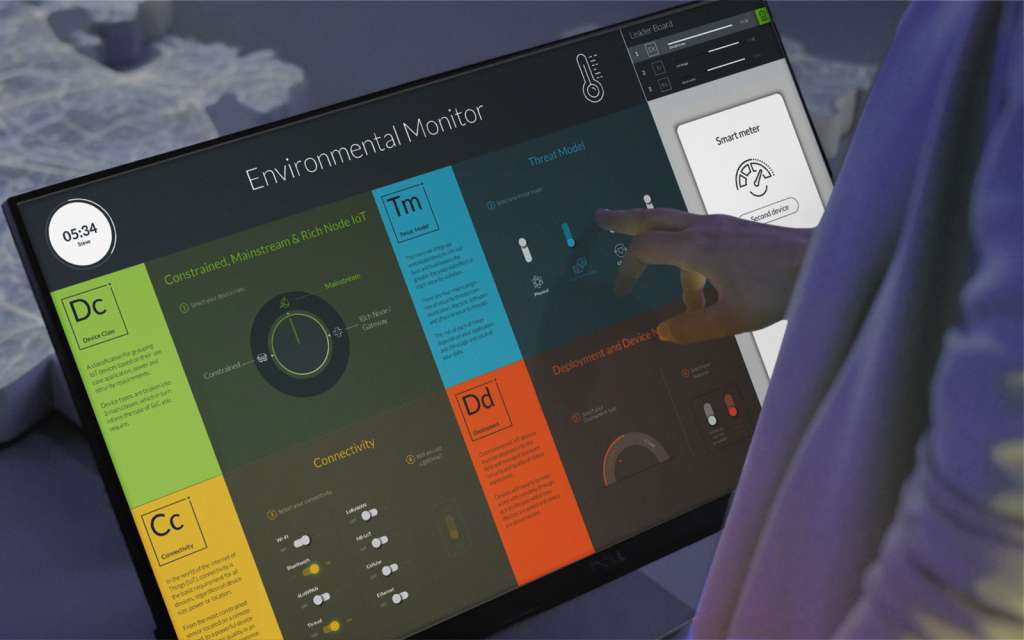
04. Any device, any where, any time
You may want to use your experience in different locations, but don’t have control over the type of device available. Depending on the software used in development, it is possible for it to be viewed on any device, from mobile to large Touchscreen. And, use any operating system, such as iOS, Windows or Android.
05. User data capture
Capture visitor contact details as they engage with your business and allow them to email themselves valuable content from your experience. Combine this information with data gathered when tracking the pages and products they view, to gain a powerful insight into who your customers are and where their interests lie.
06. Object recognition
Touchscreens with smart sensors can now detect and identify an object either placed on the screen or near to it. Our work with Syntegon at exhibitions and tradeshows, saw replica bakery items used to launch and display the features and benefits of the packaging machines required for the different types of biscuits. Supporting their sales team by giving their customers a much more interactive and immersive experience.
07. Multi-lingual
Your experience can be translated into as many languages as you require. The touchscreen experience can either host all languages and allow visitors to self-select. Or, if you’re running multiple global events simultaneously, the appropriate local language can be pre-selected by the events team using the central CMS.
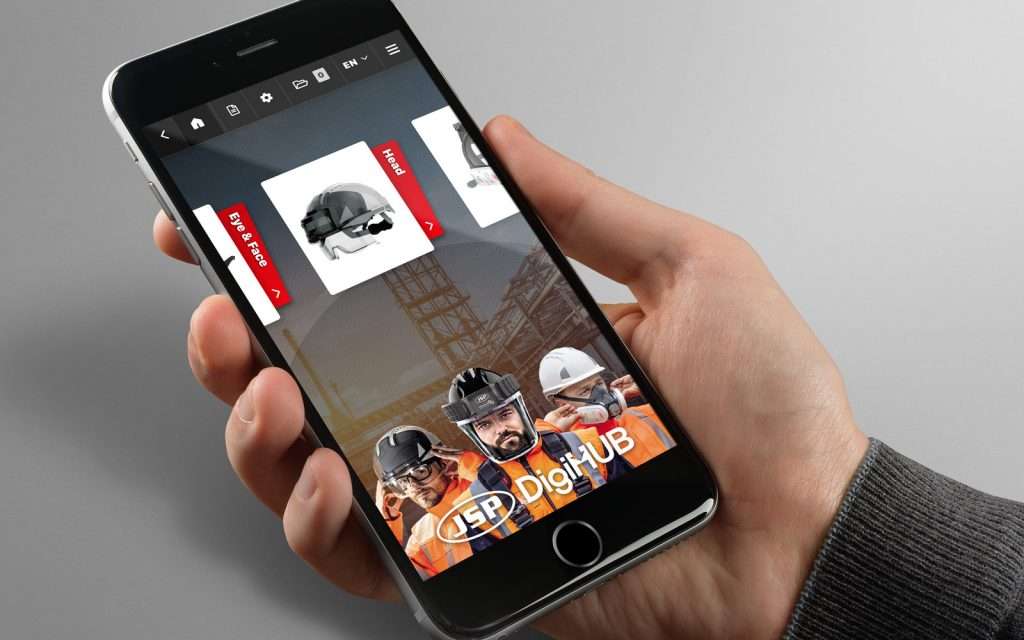
08. Offline use
This is very important as often, at tradeshows or events for example, you may not be able to guarantee a strong internet connection. Draw confidence from the knowledge that your full experience is available offline and only needs to be connected for updates.
09. Facial recognition and artificial intelligence
Touchscreens with cameras have the capability to recognize people, including details such as their gender or age. We have used this feature to help our client’s customers select and fit protective headwear and glasses as the experience can detect gender and display appropriate equipment.
10. Interact with the environment
A touchscreen experience can also act like a giant remote control. It can be connected to lighting, sound, or other screens and projections. These can be activated from the experience like turning lights on or off or changing colours, sounds etc.
11. Multiple versions
With a CMS it’s possible to run multiple versions of an experience with different content and branding. Useful, if you run multiple events and need central control from one place.
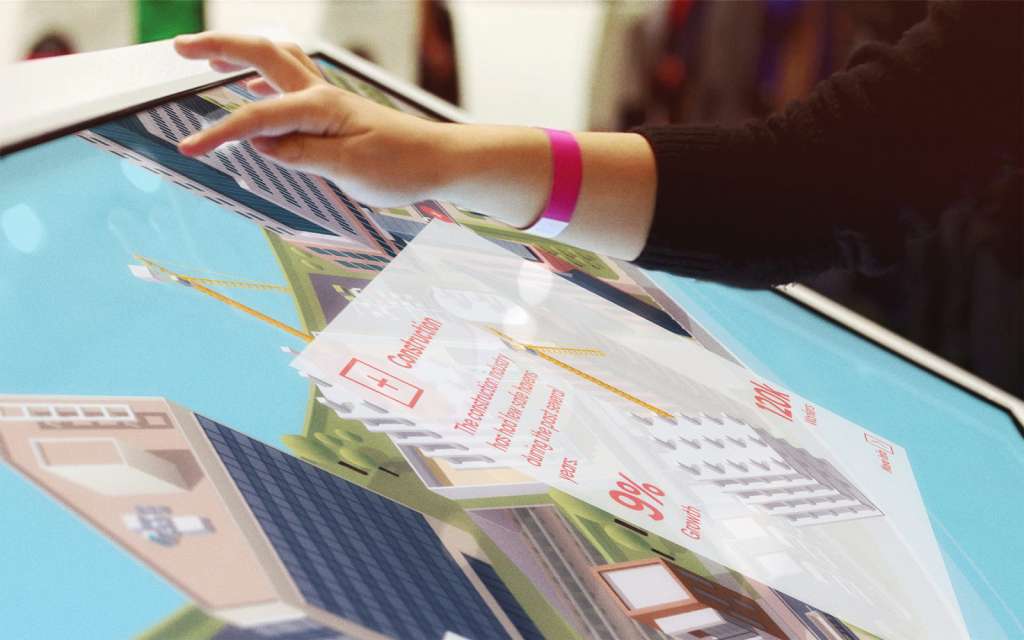
12. Wayfinding
Touchscreens are great for wayfinding letting visitors explore buildings, tradeshows, or cities. Intelligent search and smooth animations can make for an intuitive, easy experience for people to be able to explore and quickly orientate themselves.
13. Interactive 3D models
This is an exciting feature where you can place fully interactive 3D models into a touchscreen. Pull them apart, manipulate them, magnify them, click on hotspots to pull up information, or reconfigure them in real-time. Your options are endless and limitless.
14. Self-serve content
You can have a downloads basket so people can tag content and after entering their email address the content will be automatically emailed to them. In turn, a record of this can be sent to your CRM giving you key insights into your customer’s world.
The finishing touch for your favorite touchscreen fixtures!
The POP platform has been built from the ground up with the latest technology stack to help our customers create interactive touchscreen experiences that WOW! and win business. If you would like to know more about our process and approach to creating a unique, powerful interactive experience, we’re always happy to arrange a demo and talk you through our process.
Take a look and see the types of touchscreen features we can deliver…
If you’d like to know more, get in touch today on +44 (0)117 329 1712 or hello@popcomms.com. We’d love to hear from you.
Related Posts
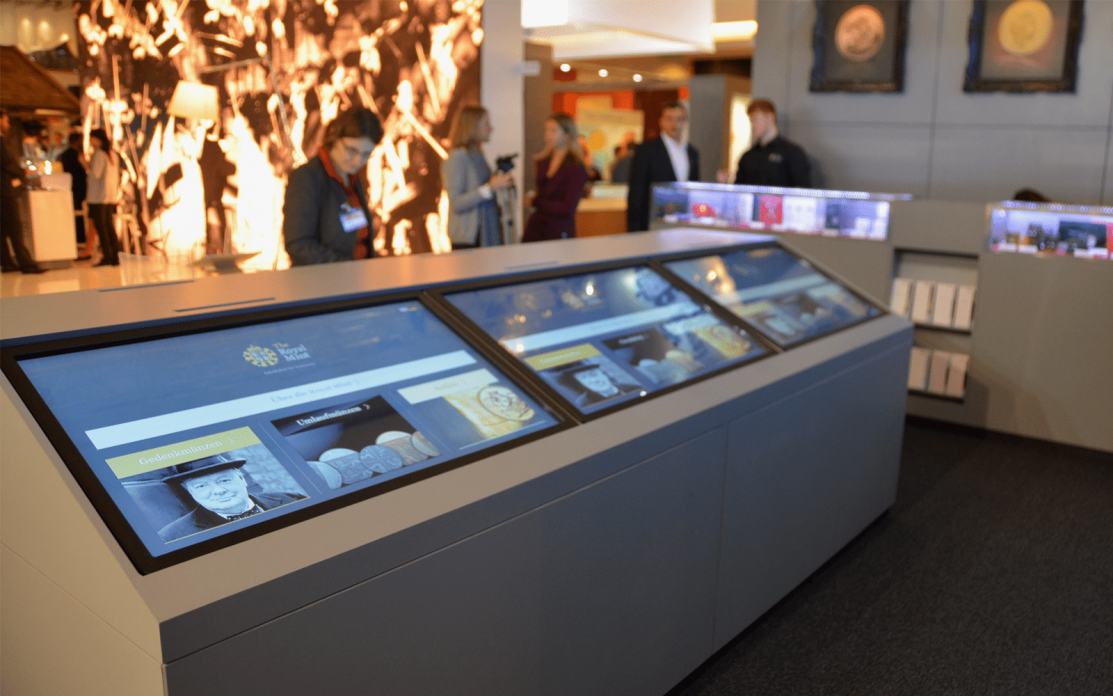
Finding the Best Interactive Touchscreen Display Developer for Your Project
Read
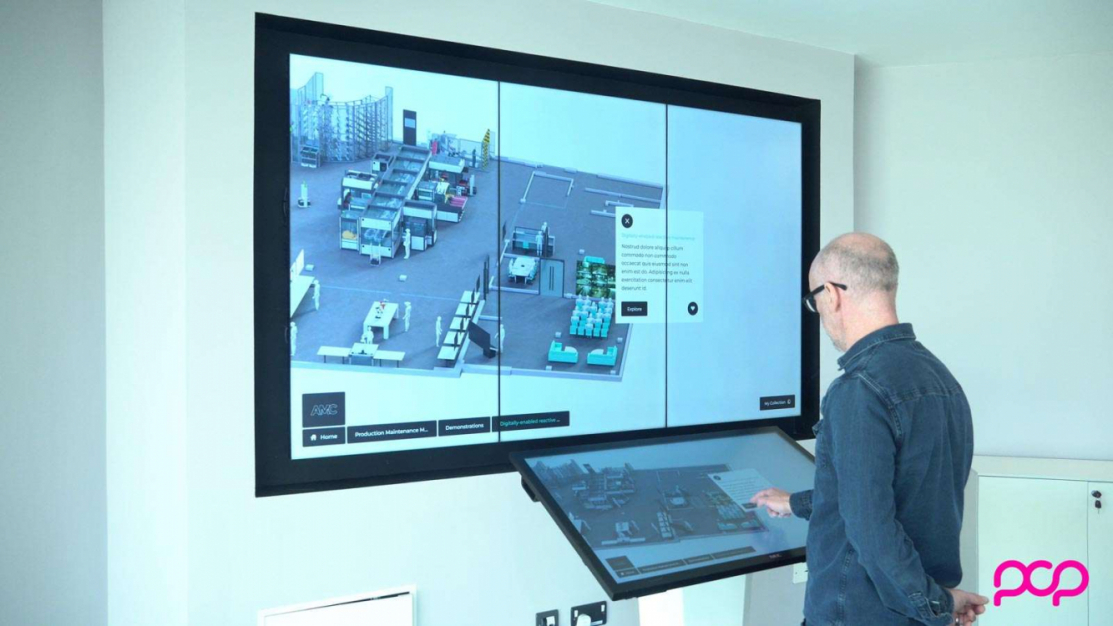
ABB – Digital Manufacturing Ireland customer experience center
Read
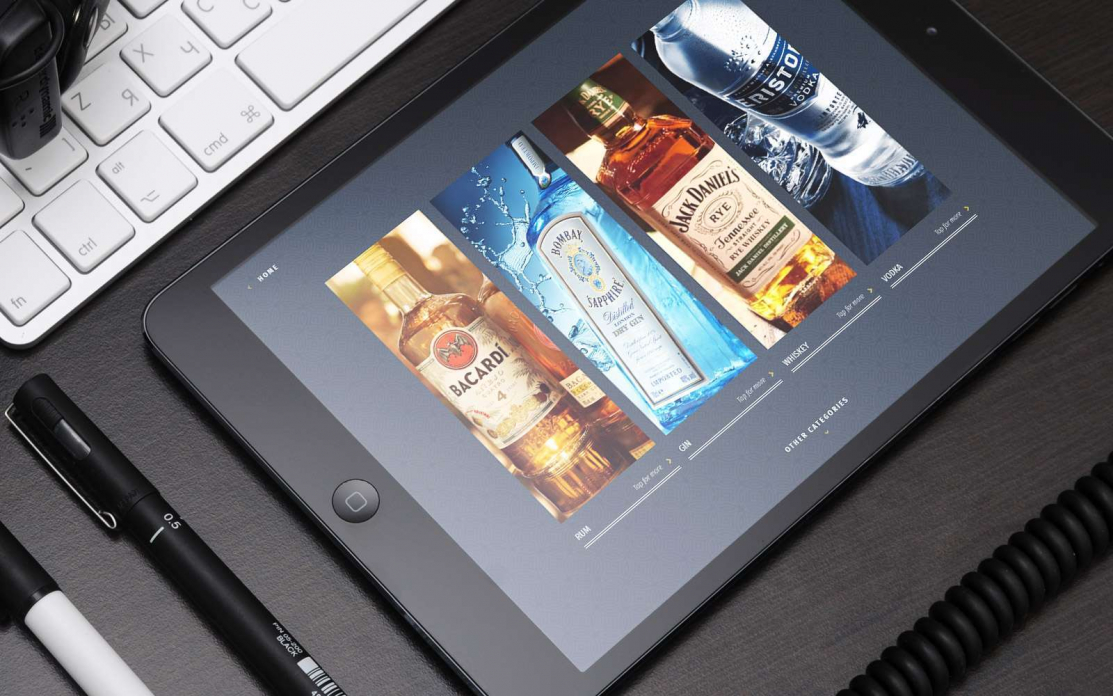
Why the Discovery Phase Is Key When Developing a Successful Sales Enablement Tool
Read
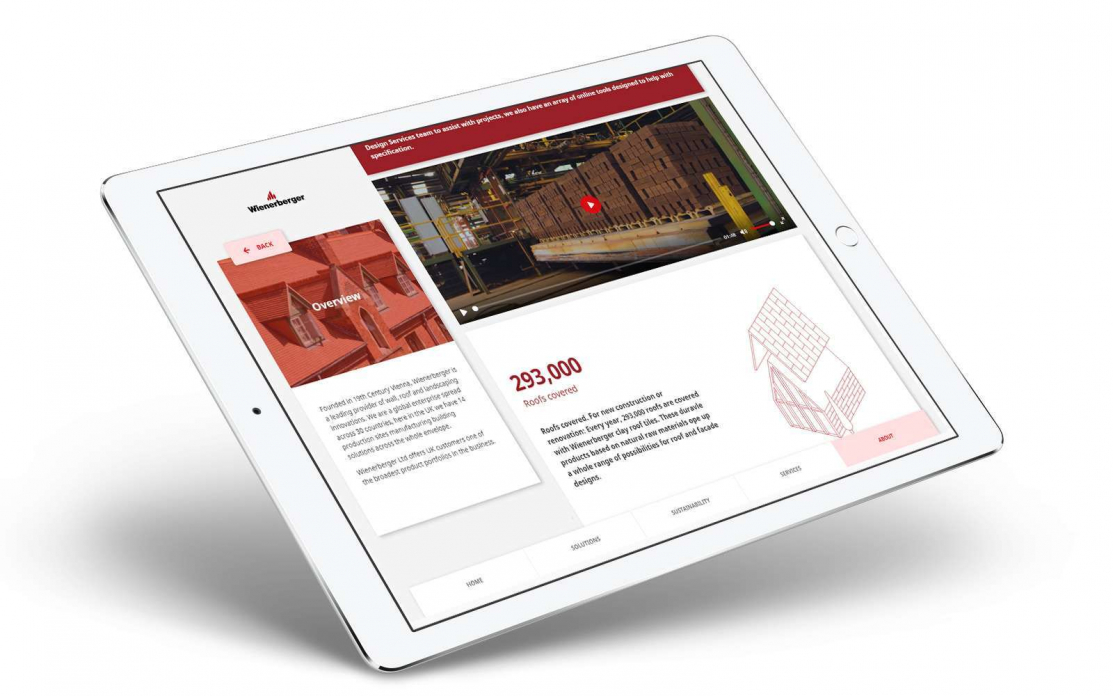
What Types of Interactive Content Will Your Customers React Best To?
Read